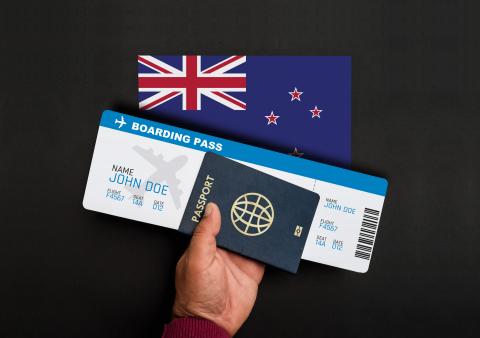Under U.S. immigration law, a nonimmigrant who wishes to work temporarily in the United States must get a visa appropriate to the nature of their intended employment. In order to apply for a work visa in the United States, your potential employer or agent must first file a petition with the U.S. Citizenship and Immigration Services (USCIS). If you want to apply for an H, L, O, P, or Q visa in the United States, you must first have a petition granted by USCIS. You cannot apply for a work visa at the Consulate until the petition, Form I-129, is accepted. If your petition is accepted, the USCIS will send a Notice of Action, Form I-797, to your employer or agent.
During your interview, the consular officer will use the Petition Information Management Service (PIMS) to confirm that the Department of State has approved your petition. If you want to be sure your I-129 petition was accepted, you’ll need to bring the receipt number with you to the Consulate interview. Even if your petition is approved, you may still be deemed ineligible for a visa under U.S. immigration law. New Zealand Americans, often known as Kiwi-Americans, are a subset of the American population with at least some ancestral ties to New Zealand. It was estimated in 2010 that there were 20,000 people of New Zealand descent residing in the United States. Most New Zealanders who relocated to the United States during the 1940s did so in search of better educational or occupational opportunities, particularly in the fields of banking, import/export, and the arts/entertainment.
Methods of Immigration
A Green Card is required to live and work in the United States permanently legally. The most popular pathway for Irish immigrants to the United States is through family sponsorship. Other typical routes include finding work, receiving a visa through a family member, or being an immediate relative of a U.S. citizen.
Worker Assistance Programs
Those who go across the ocean to the United States typically do so in pursuit of better job prospects. Getting hired by a company in the United States is the most common route to legal permanent residency. The EB-1 and EB-2 visas are examples of immigrant work visas that usually lead to a Green Card shortly after entering. The H-1B, L-1, O-1, E-1, and TN visas are all examples of temporary non-immigrant work visas. Suppose an immigrant arrives in the US with a non-immigrant work visa and intends to become a permanent resident. In that case, they may alter their classification and apply for an immigrant work visa while in the states. The best way to figure out if you qualify for a visa and which visa is best for your situation is to talk to an immigration lawyer.
Support from Relatives
Numerous foreign nationals legally settle in the United States as permanent residents because they are either direct relatives of American citizens or qualify under other family-based considerations. Each of these visas, Immediate Relative and Family Preference, offer separate application processes, therefore it is crucial to identify which one is most beneficial for each individual’s circumstance. A consultation with an immigration solicitor or other relevant expert might be useful.

